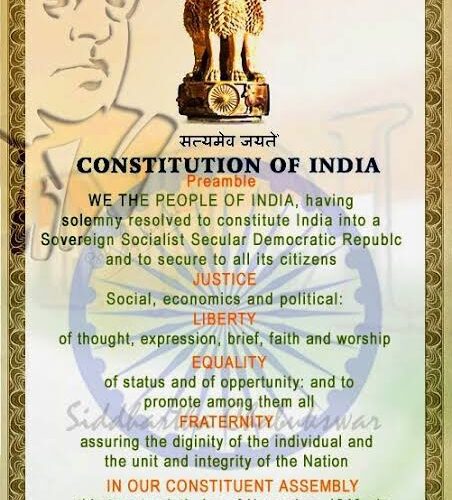EUTHANASIA: RIGHT TO DIE WITH DIGNITY
INTRODUCTION
The idea of ‘life’ and ‘death’ has called upon many thinkers, philosophers, writers and doctors to define and describe them. In some cases, they have tried or tried to paint beautiful pictures of them in many colors and shades. ‘Life’, ‘Death’ is ‘the lamp that keeps on burning’, and ‘If you want to have a life, you have to die for it ‘In order to respond to the ever-changing circumstances, the Court of Justice has been entrusted with the task of interpreting Article 21 in an even more dynamic way. The Court must state without any hesitation that ‘life with dignity’ must include the facilitation of the end-of-life process in the case of a person in a state of vegetative
RIGHT TO LIFE
From the day of birth, a human being is endowed with human rights. The right to life is considered to be one of the human and fundamental rights without which none of the rights can be enjoyed. The right to life implies that a human being enjoys the fundamental right to life. In particular, it implies that such a person enjoys the fundamental right not to die. Article 21 of Indian constitution mentions about protection of life and personal liberty. The right to life, including the right to life with human dignity, encompasses the right to live until natural death. This right may include the right to die with dignity for a person who is terminally ill. However, the concept of a ‘right to death with dignity’ should not be confused with a right to an unnatural death reducing the natural life span. One of the famous judgements on article 21 is Maneka Gandhi v.UOI
RIGHT TO DIE
Section 309 of the Indian penal code,1860 criminalizes attempt to suicide, with the convicted person facing up to two years of imprisonment or a fine, of both. Under Indian law, attempted suicide was a crime punishable by death under Indian law. However, the Supreme Court held in P.Rathinam v. UOI that criminal sentences for suicide infringe on the Constitution’s right to life and constitute a double punishment. In particular, the Court held that women who commit suicide after being subjected to abuse cannot be punished for their attempt. In the case of Aruna Shanbaug, the issue of unnatural termination of life was re discussed. On 9th March, 2018, the Supreme Court gave a preliminary ruling in a case between Common Cause and Union of India in which passive euthanasia was recognized and permitted under the Living Will or Advance Directive. This means that from now onwards, the right to Die with dignity is a fundamental right. The five-judge bench passed the judgment which comprises of CJI Dipak Misra, justice A.K. Sikri, Justice A.M. Khanwilkar, Justice D.Y. Chandrachud and Justice Ashok Bhushan.
EUTHANASIA
The practice of euthanasia, also known as mercy killing, is the act or process of administering painless euthanasia to people suffering from a terminal illness or a disabling physical condition, or to allow them to die without the need for treatment or the use of life-support machines. Active euthanasia is the practice of euthanizing a patient who is terminally ill or terminally ill by administering a fatal drug whereases Passive euthanasia is the process of withholding or ceasing life-support care.
LEGAL POSITION IN OTHER COUNTRIES
- In the Netherlands, both assisted suicide and passive Euthanasia are legal since 2001.
- In Belgium also these have been legal since 2002.
- In the USA passive Euthanasia is legal.
- In England also passive Euthanasia is legal.
CONCLUSION
If you have a terminal illness and are in unbearable pain and suffering and would like to exercise your right to die in a dignified manner, there should be a system in place for you to do so. The sanctity of life does not mean that you should be forced to continue living in pain. A person has a right to live a life of dignity. If you have an incurable illness, it is not inhumane to force you to suffer. A person who is terminally ill should be allowed to end their pain and suffering on their own terms.

Author :Akshita jain student at Bharati Vidyapeeth institute of management and research




